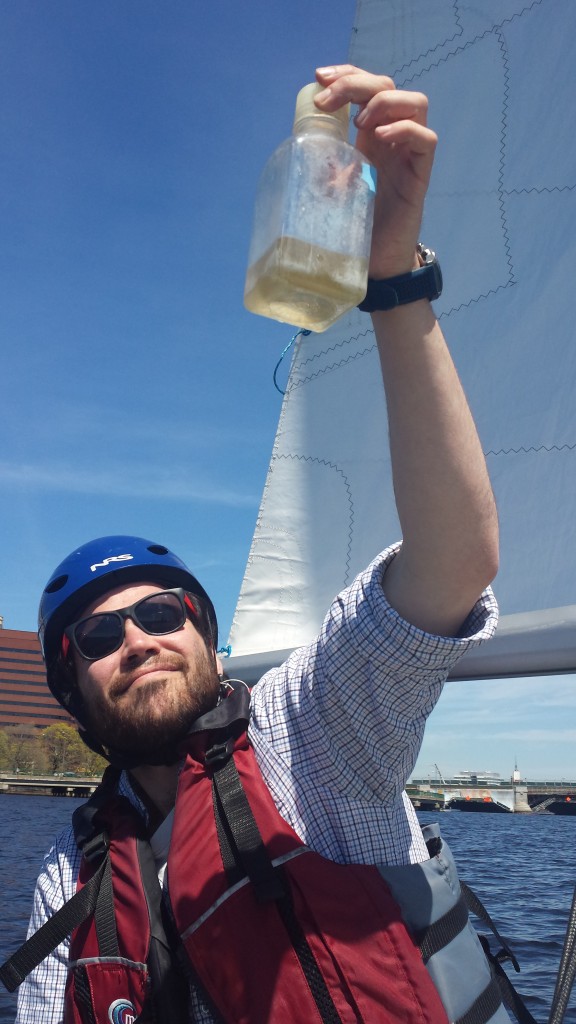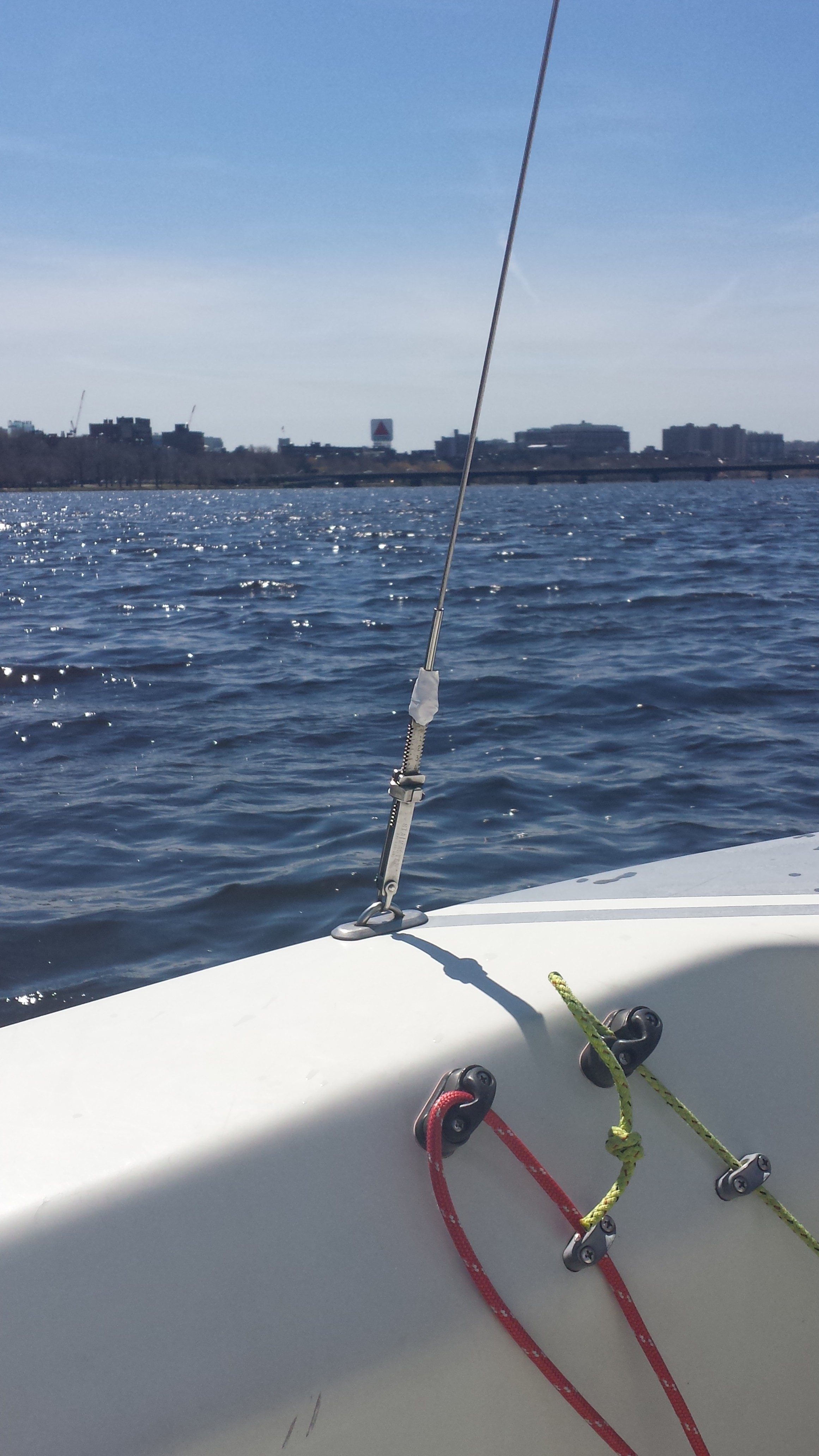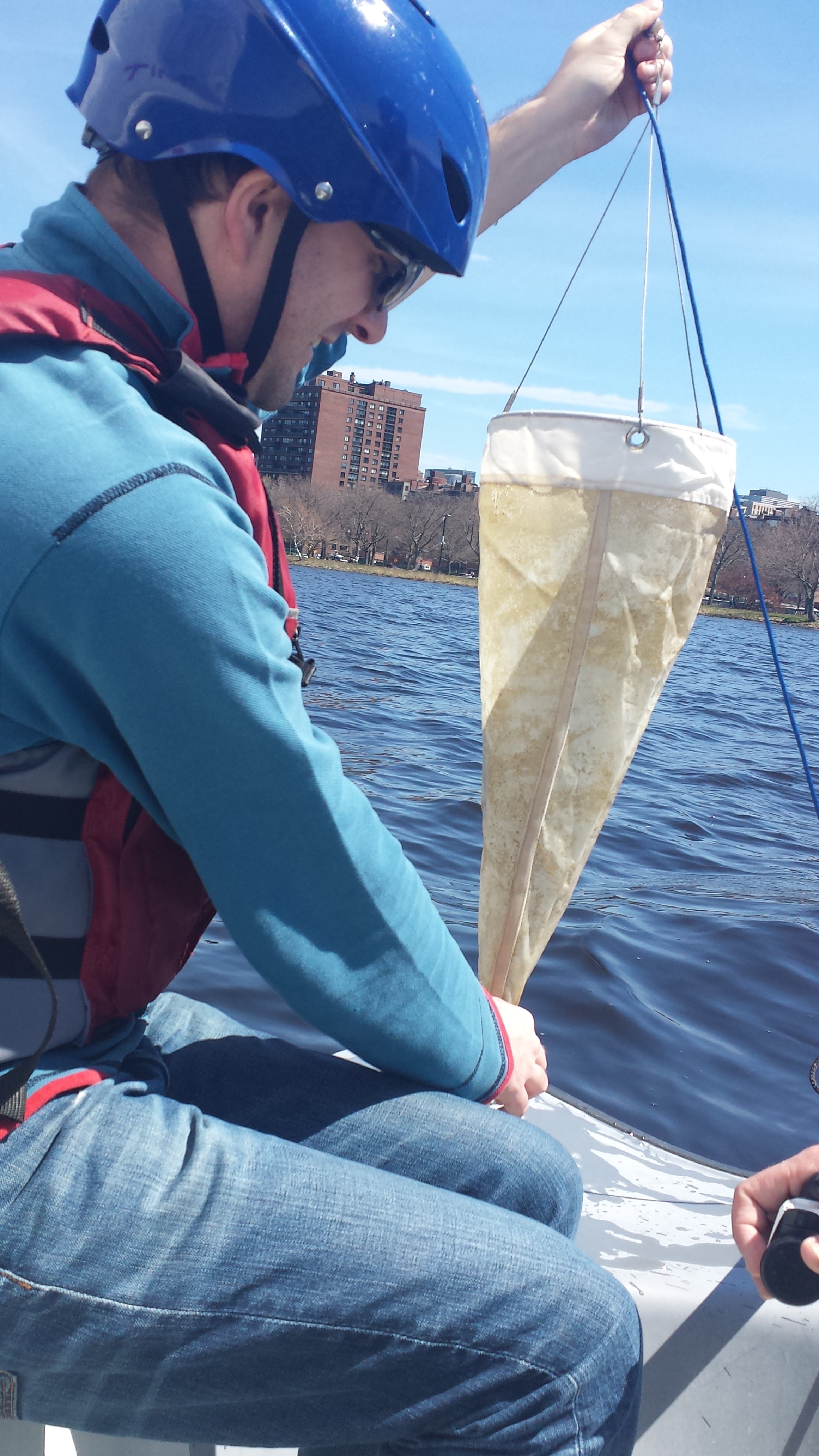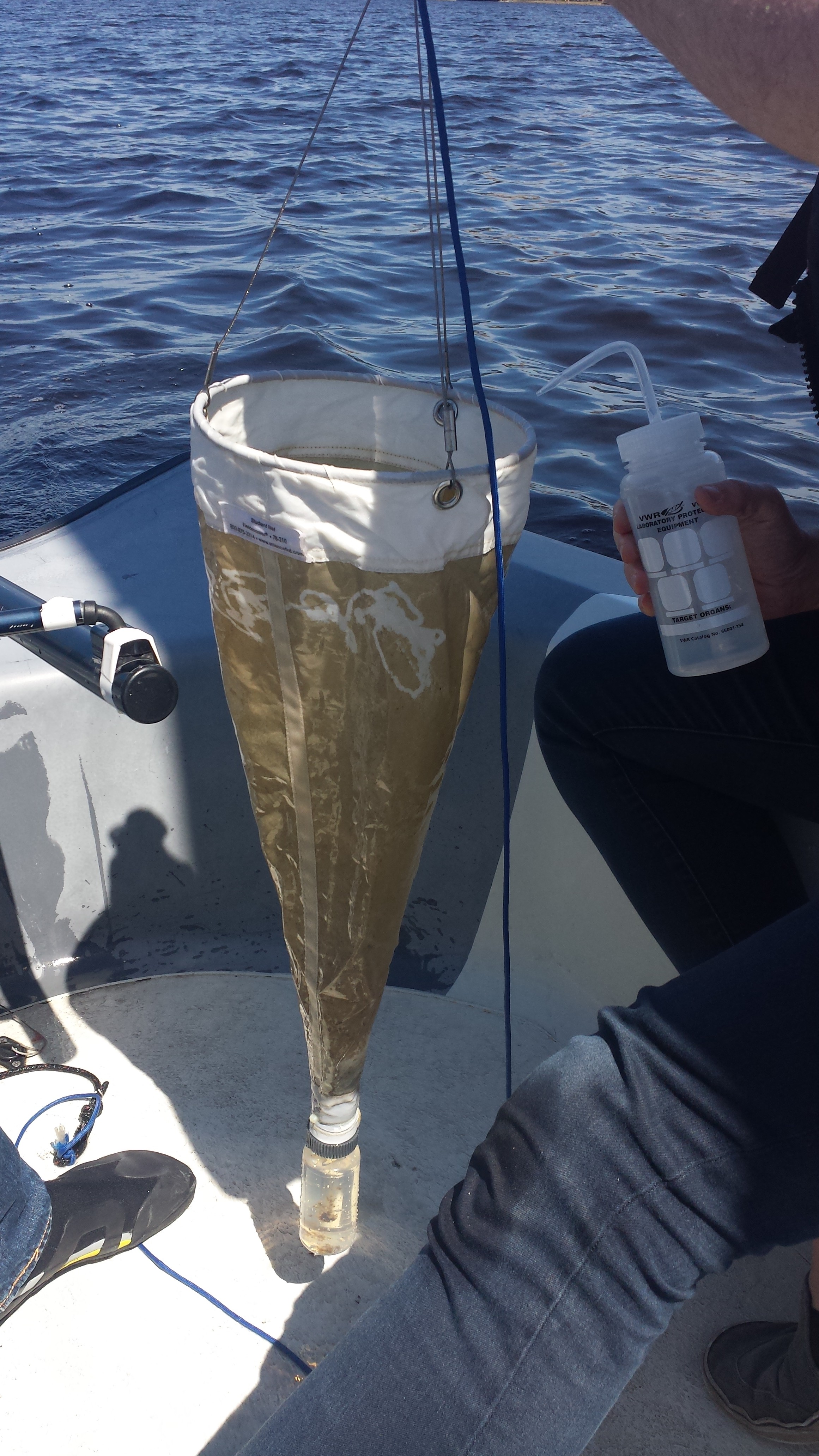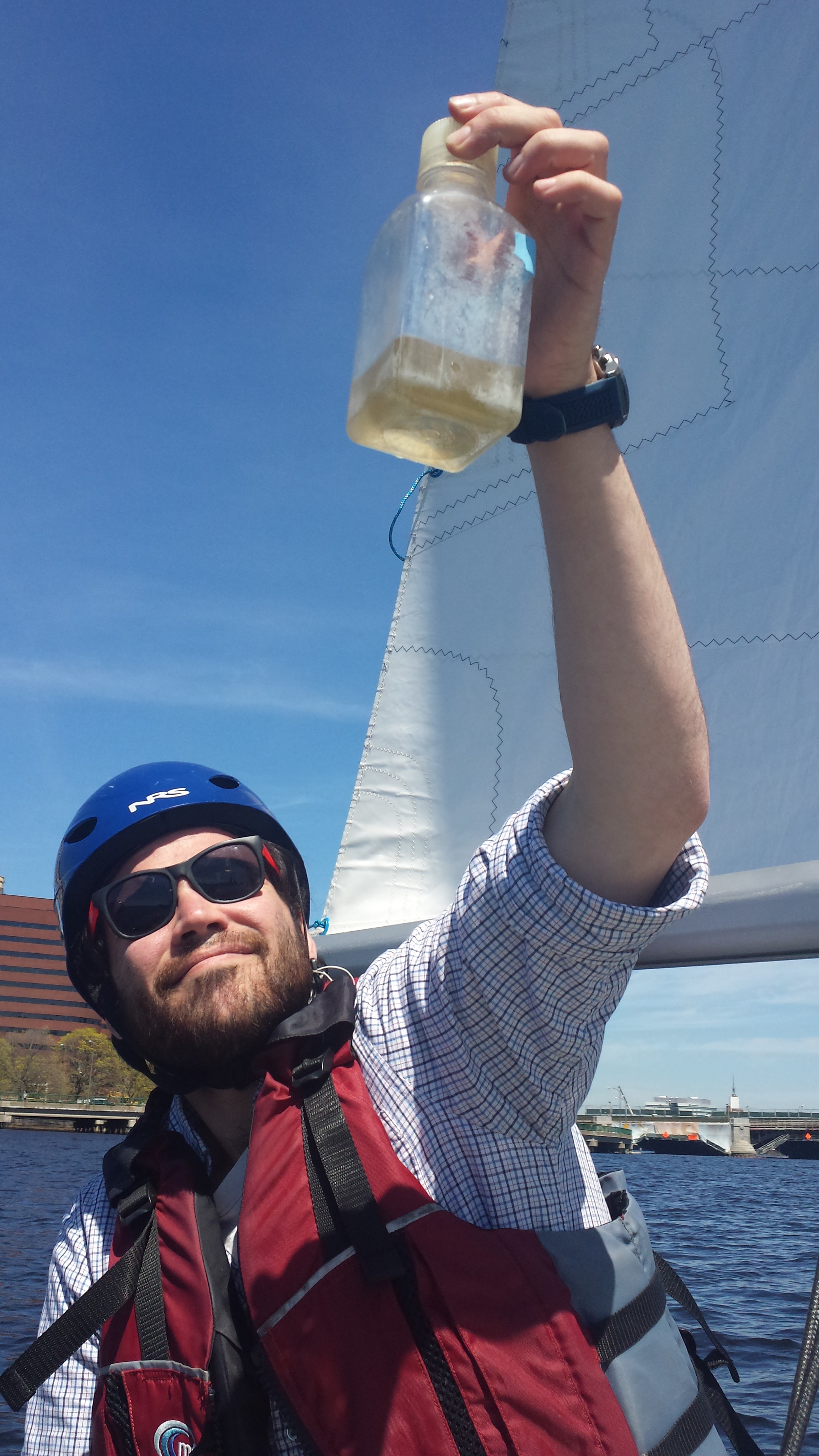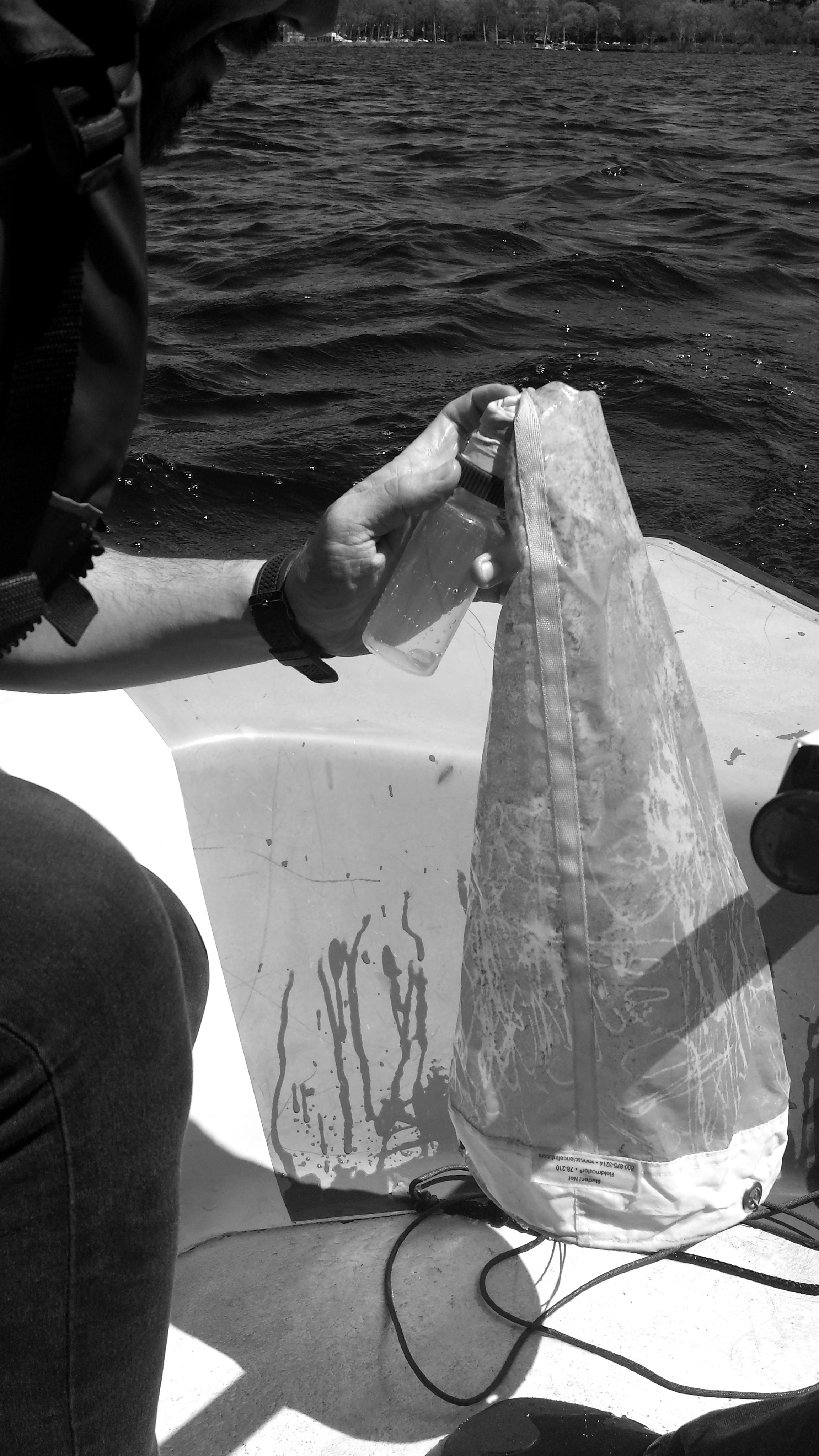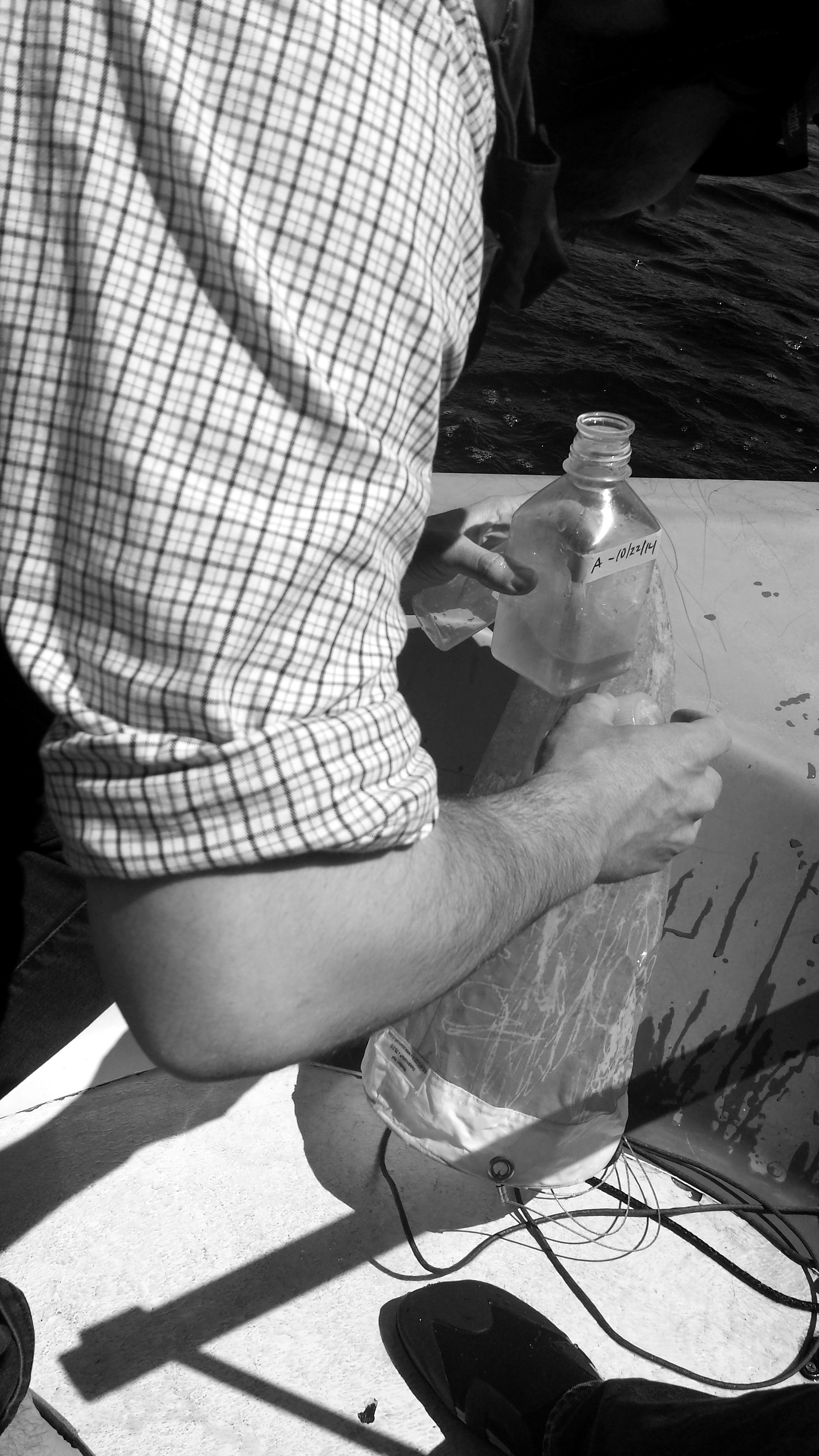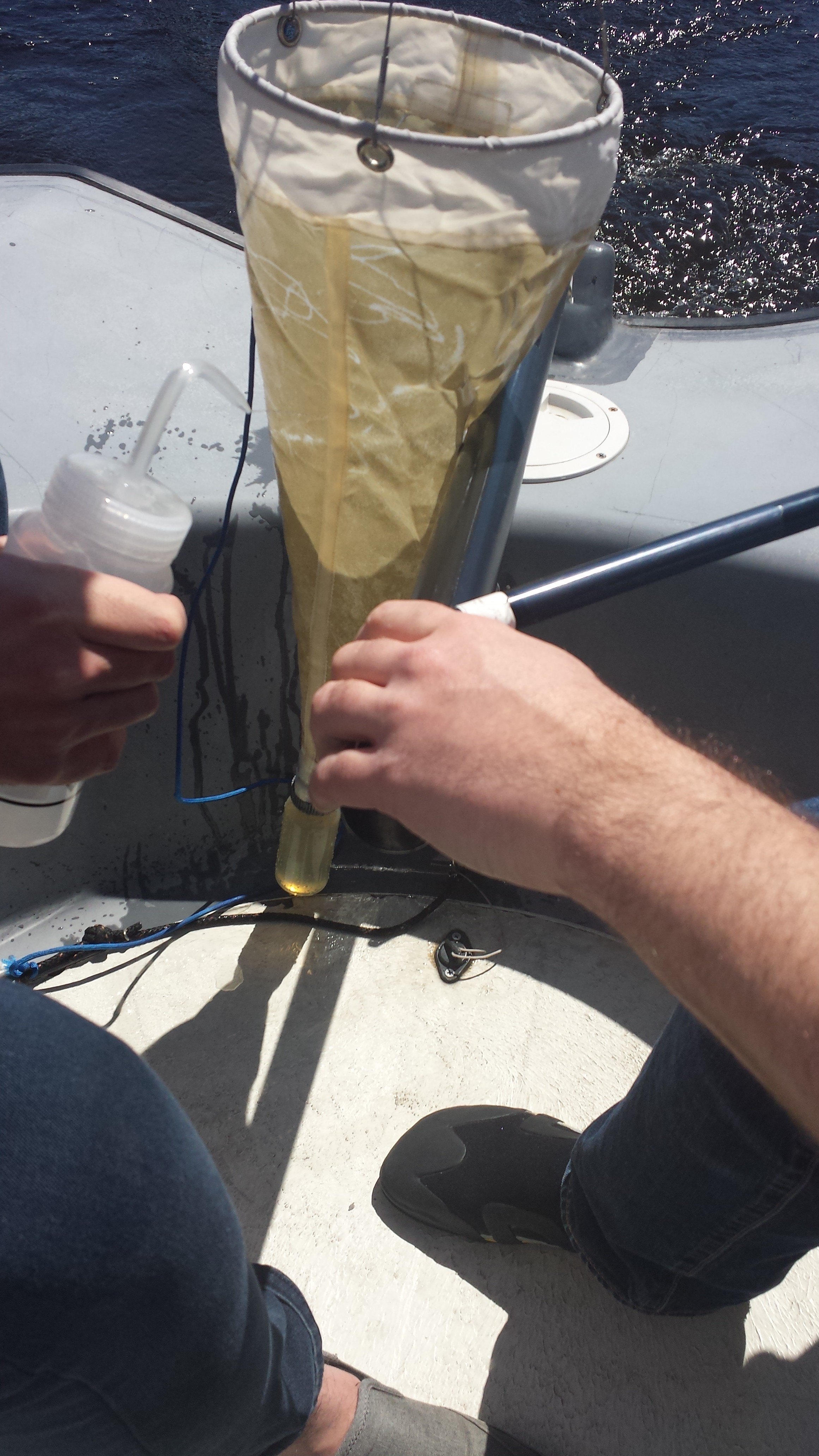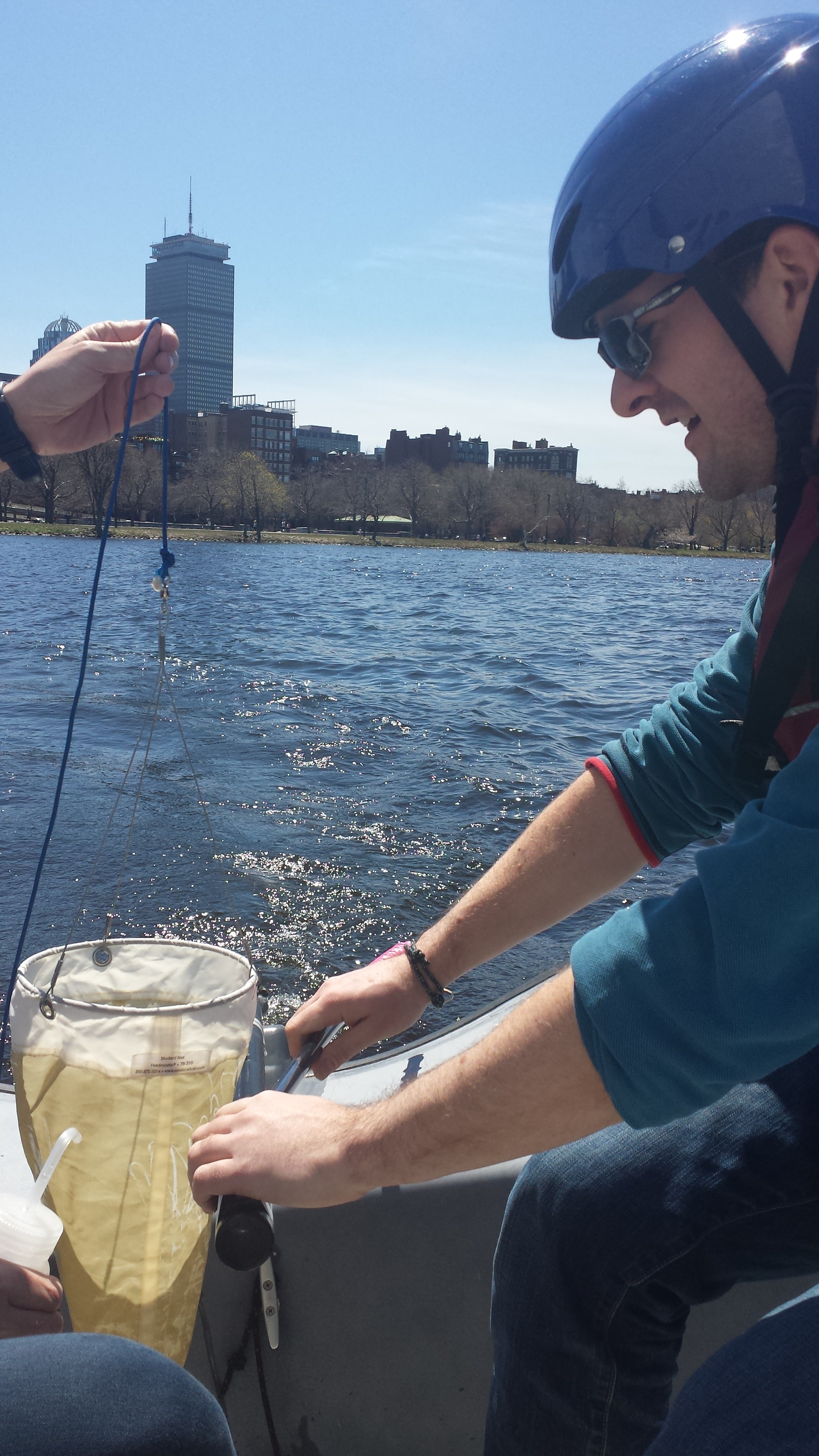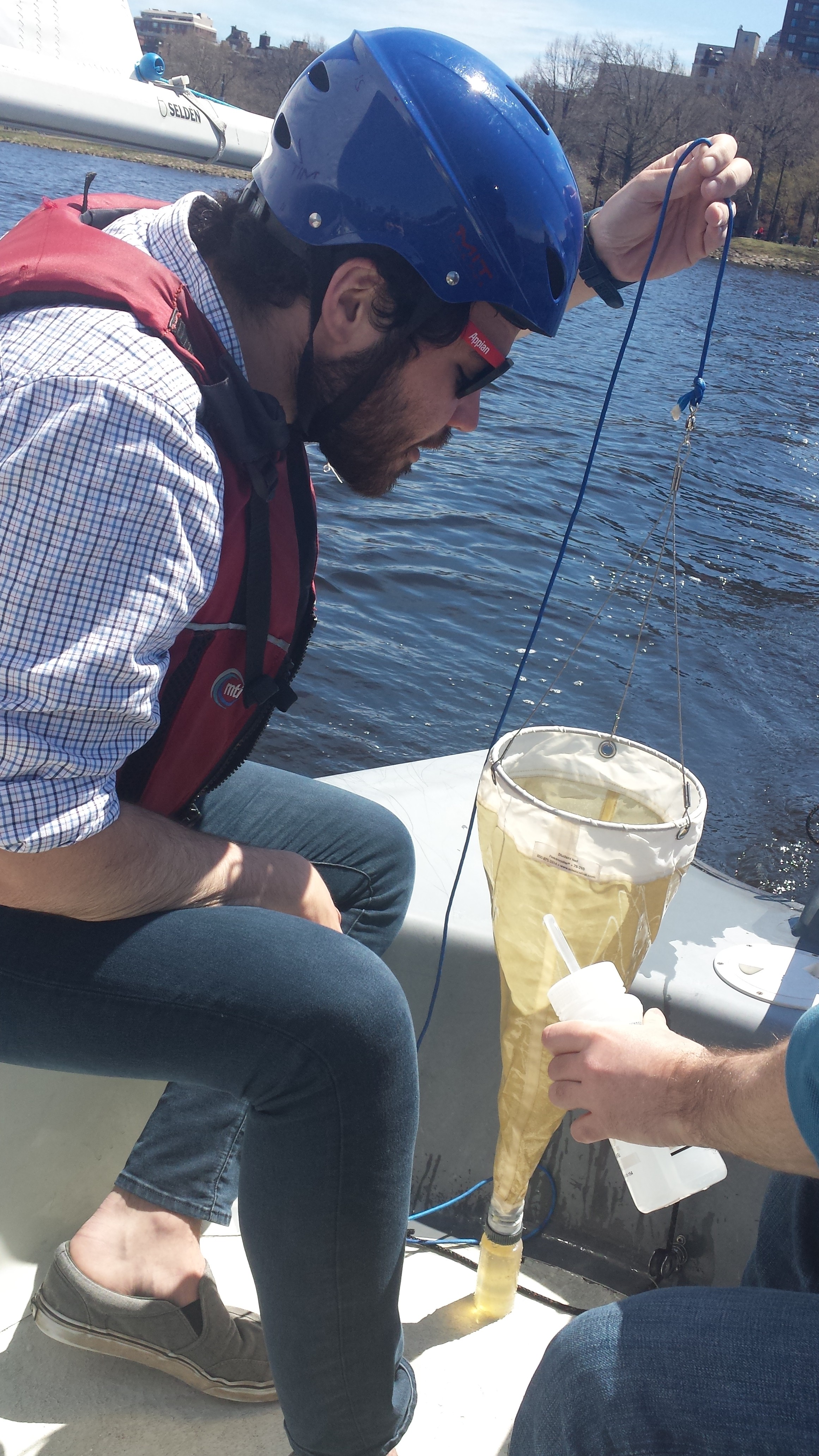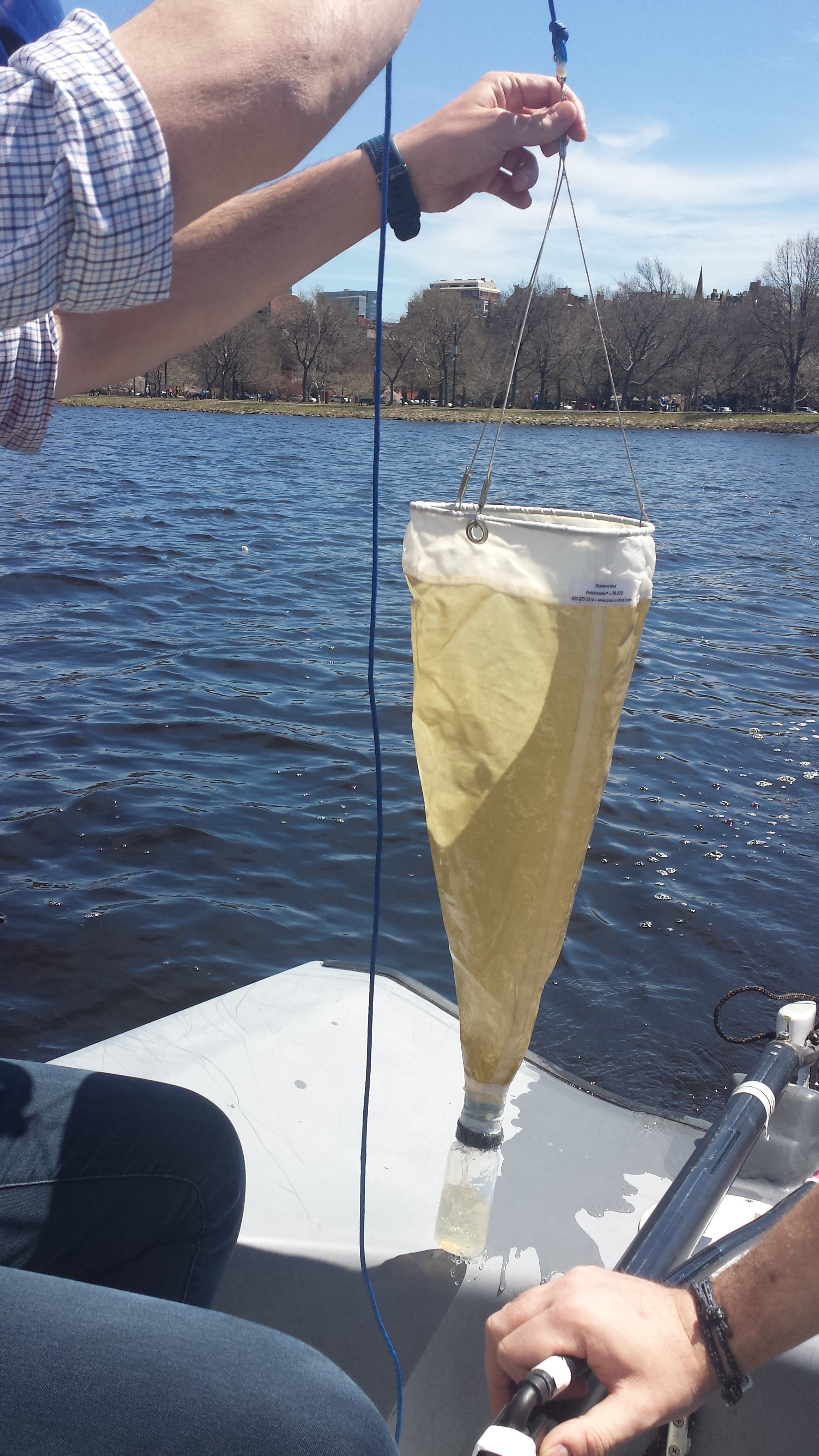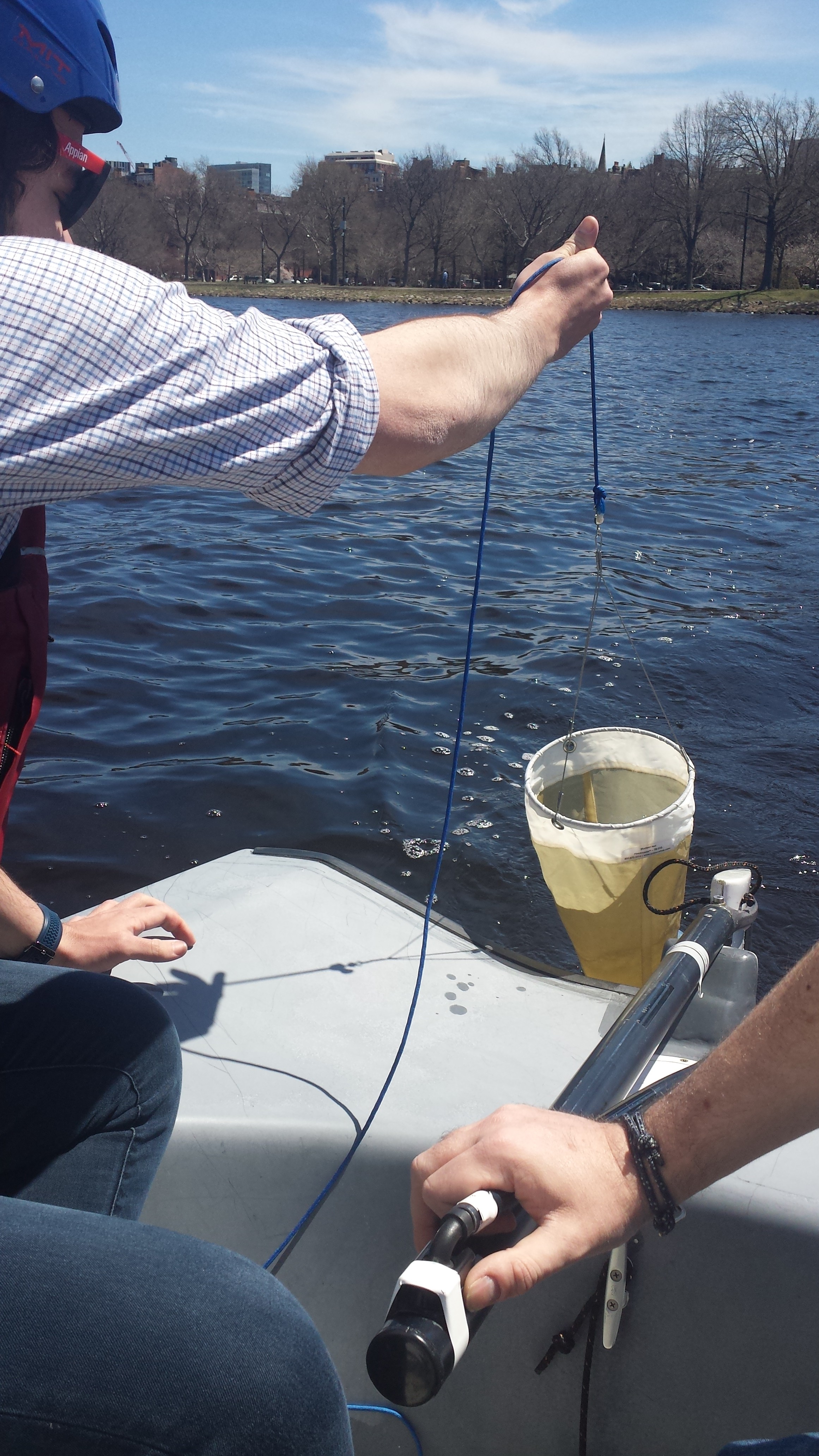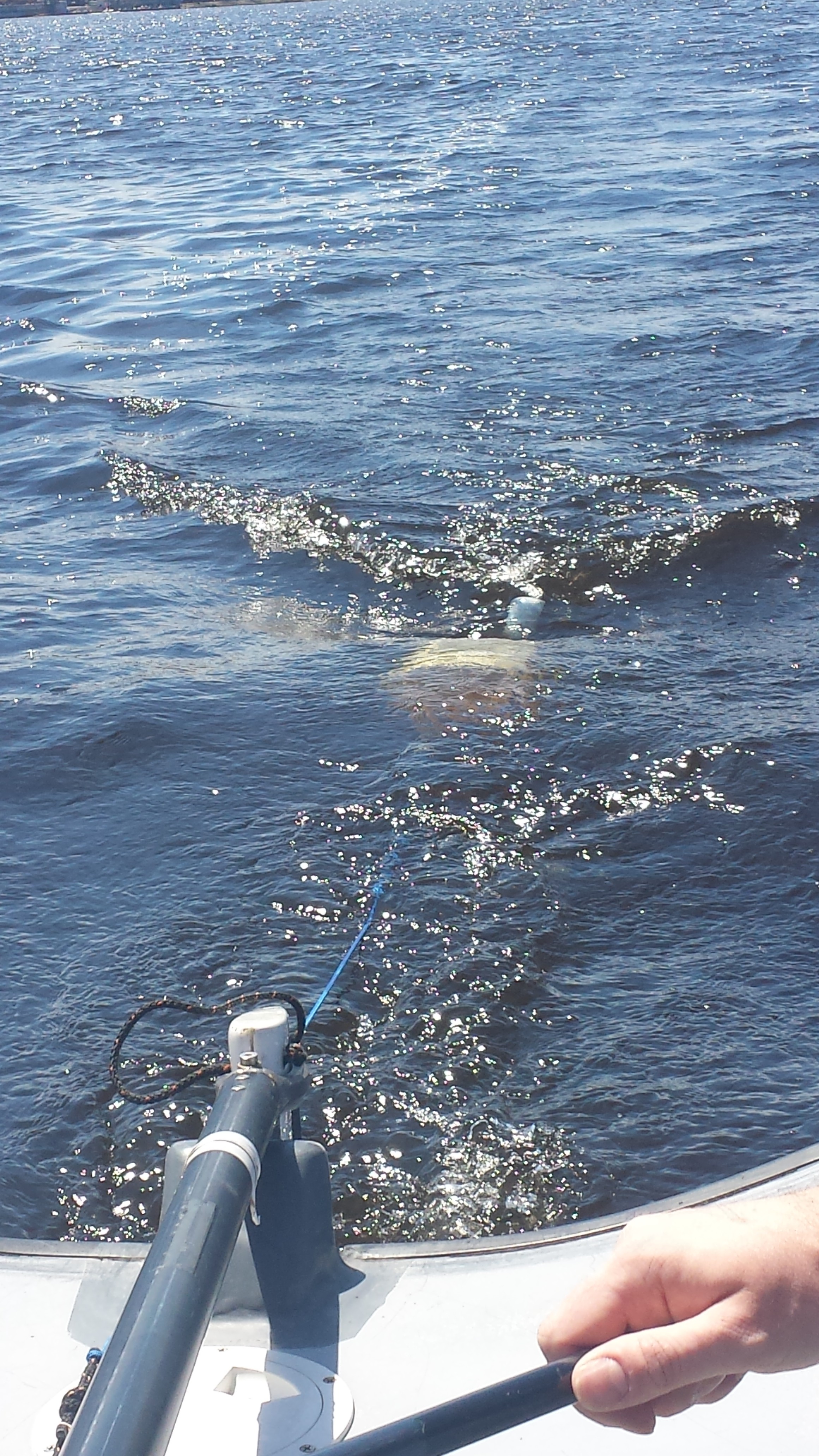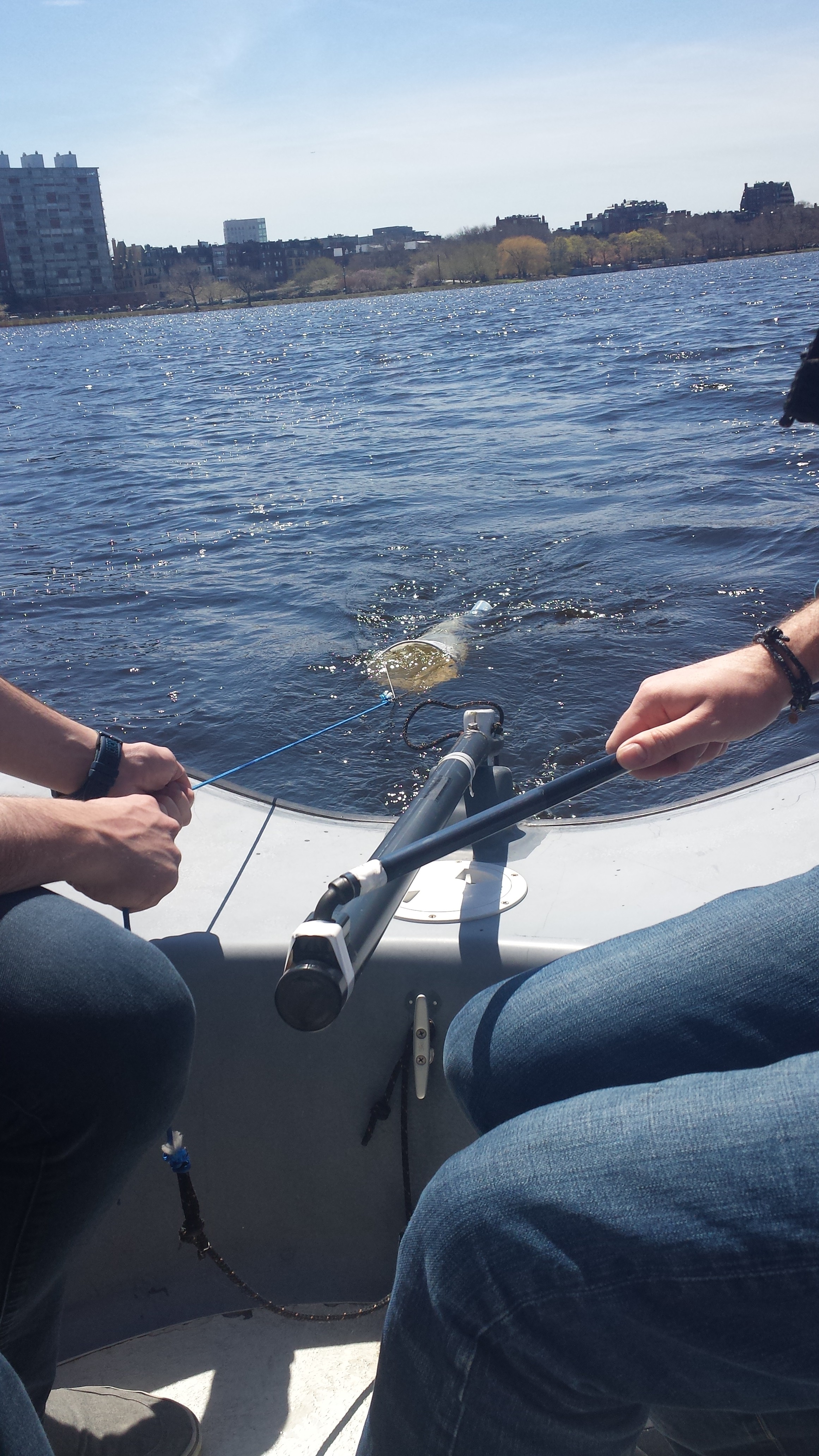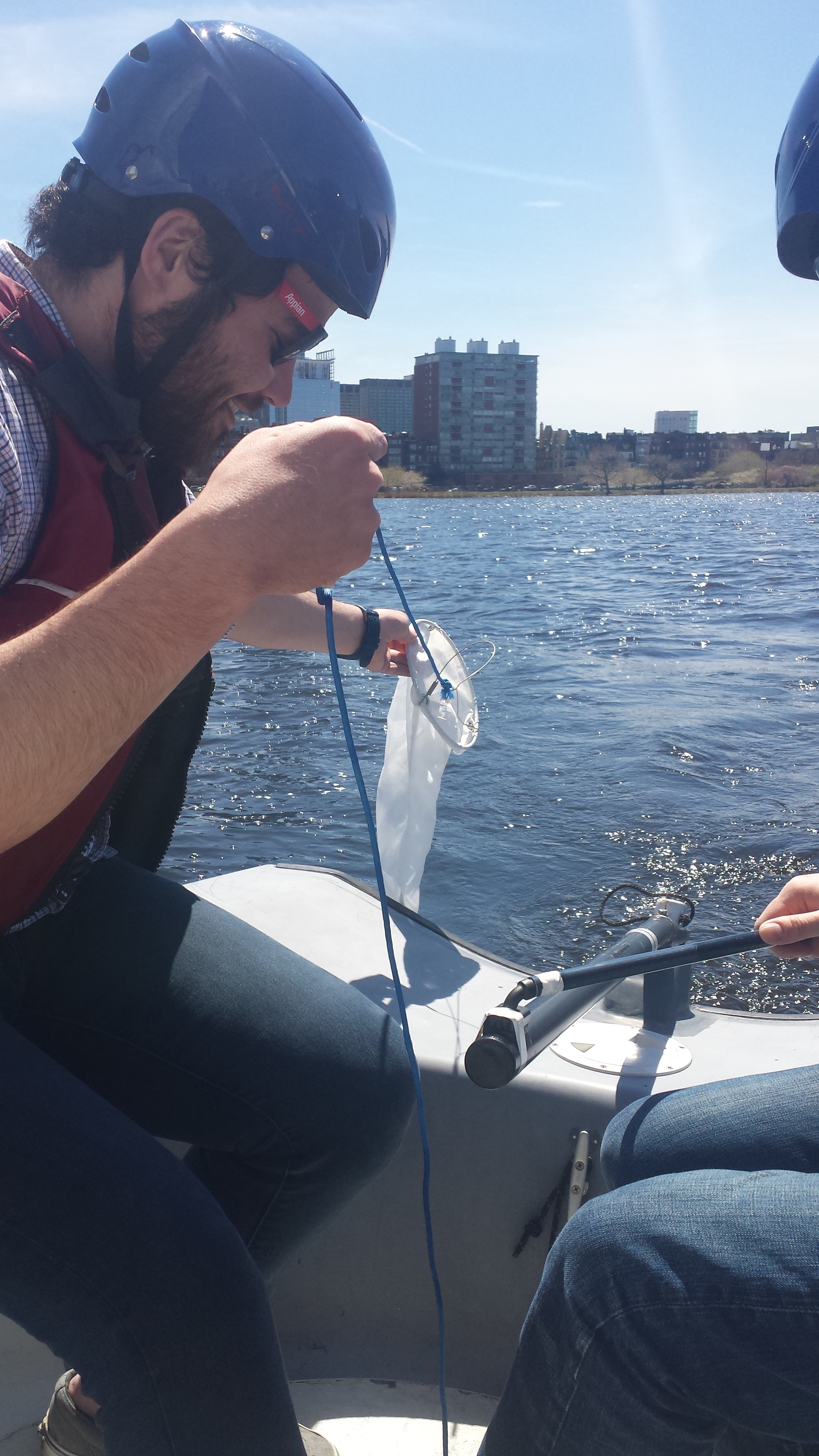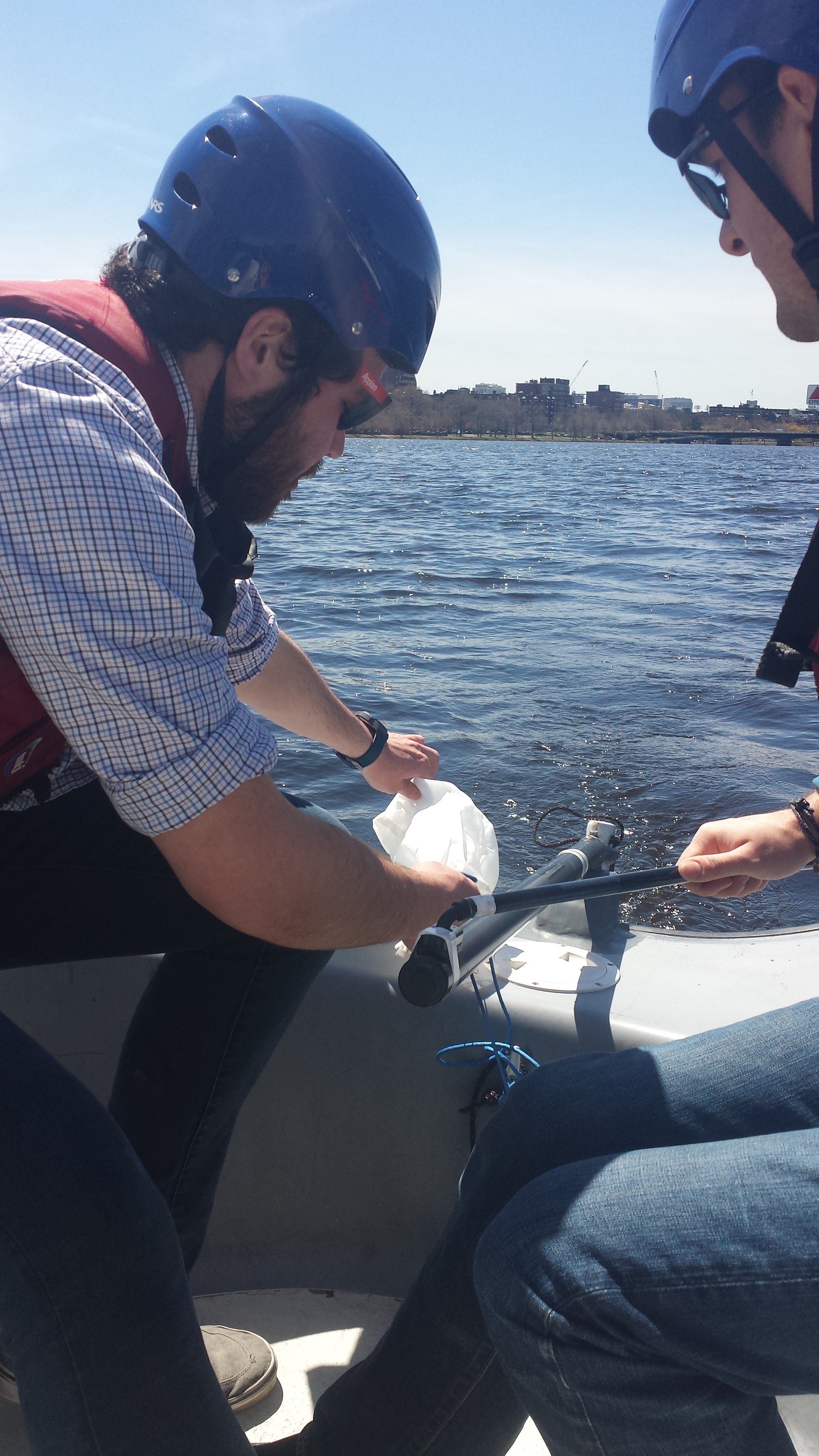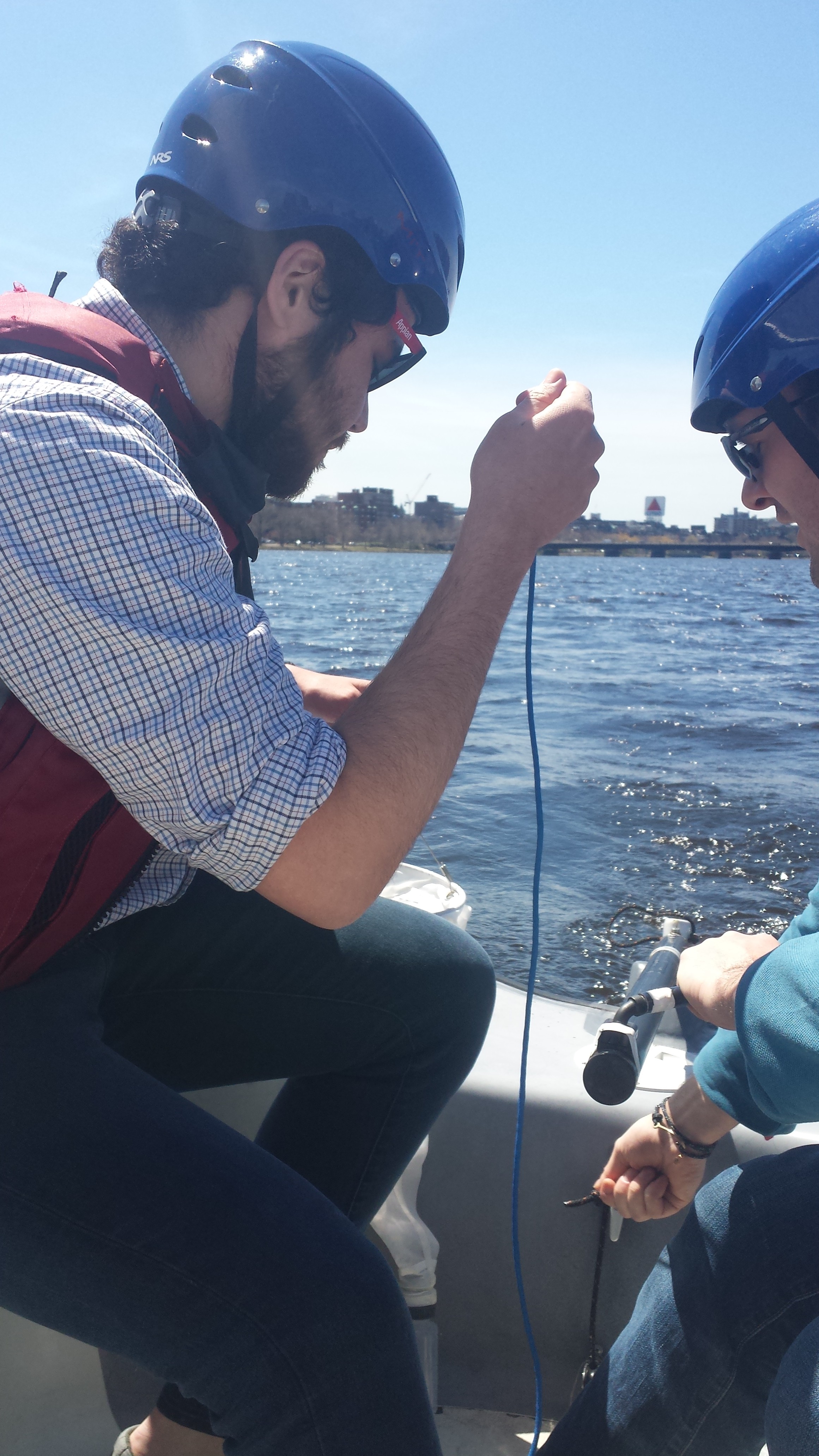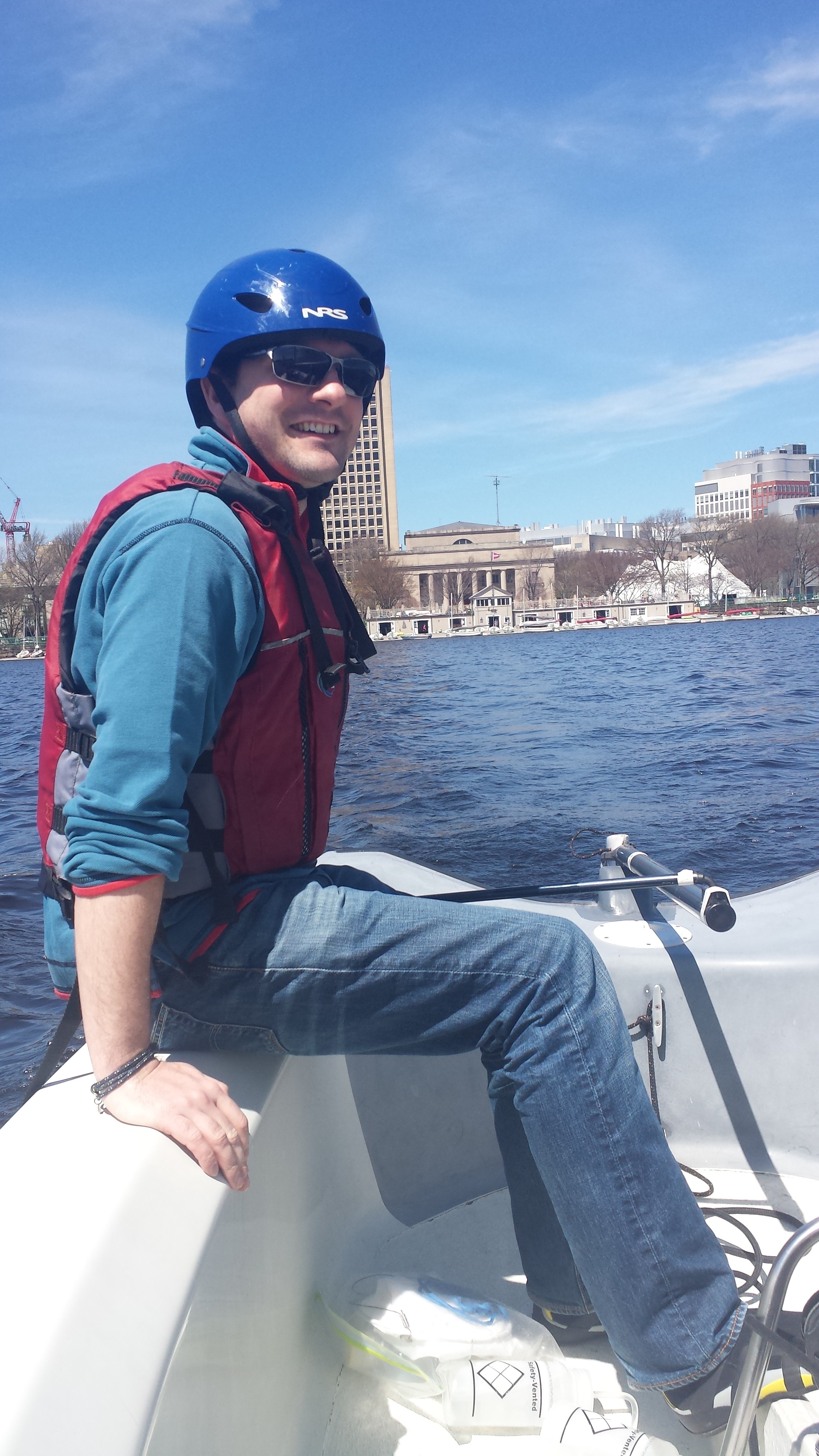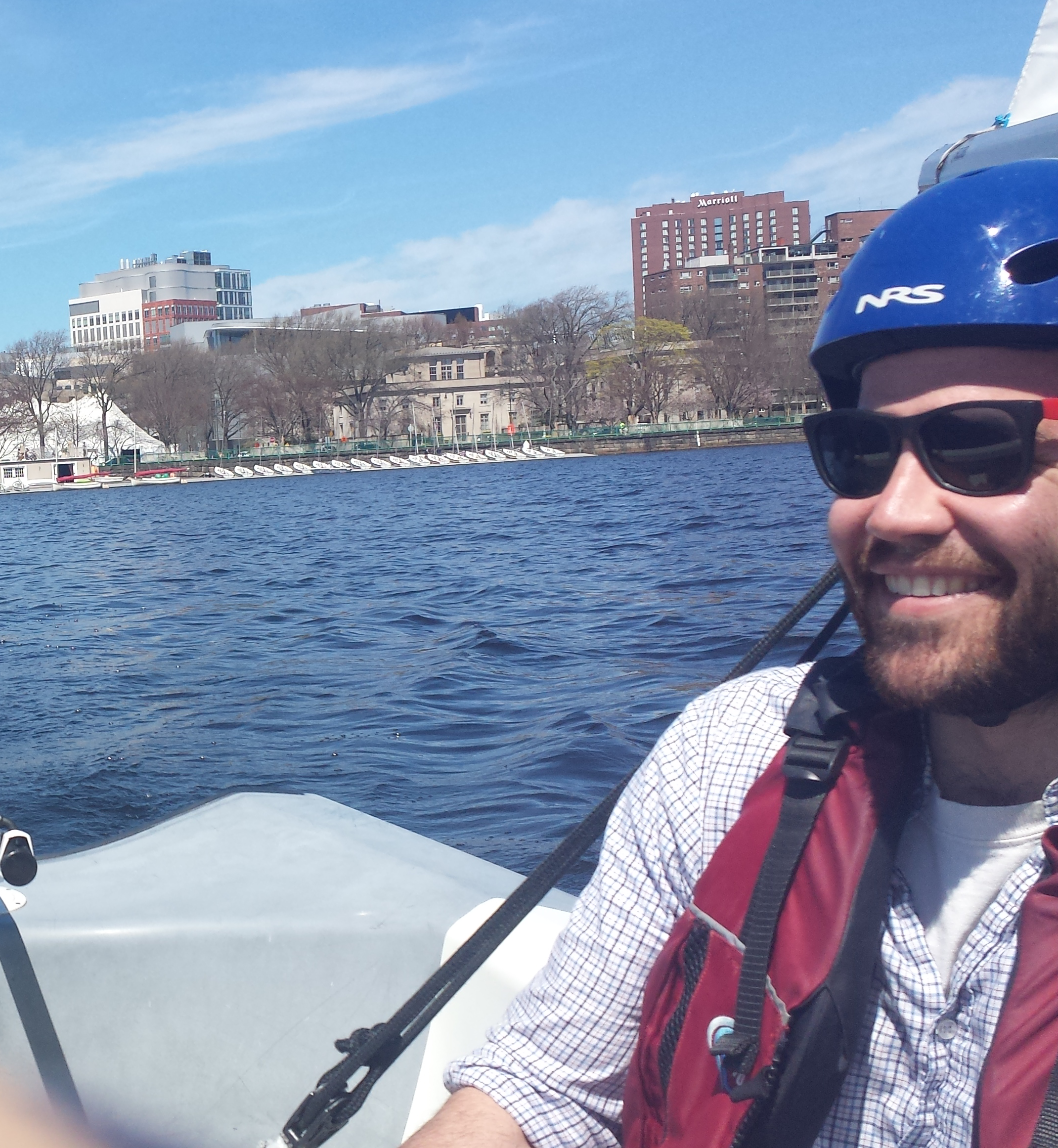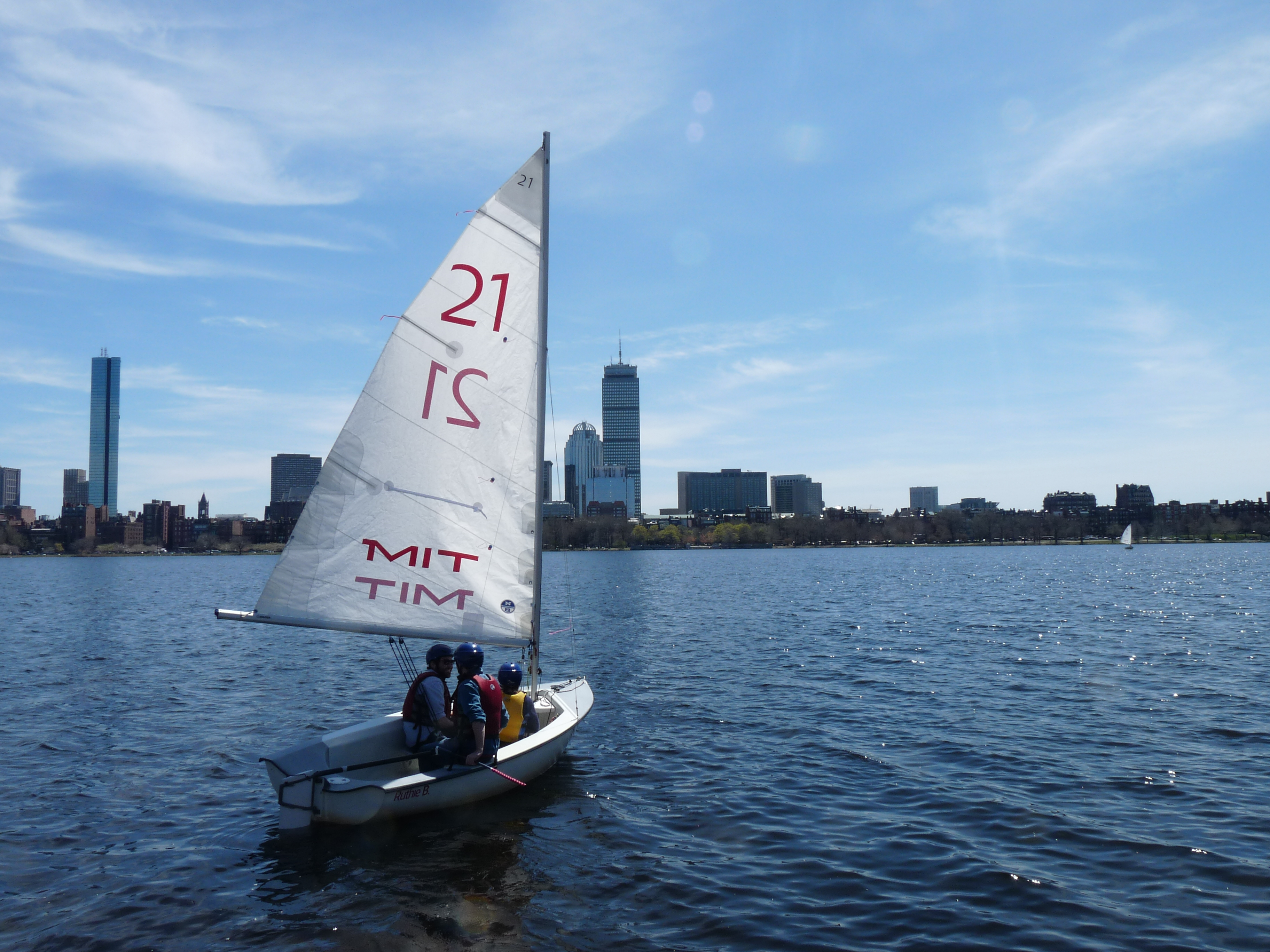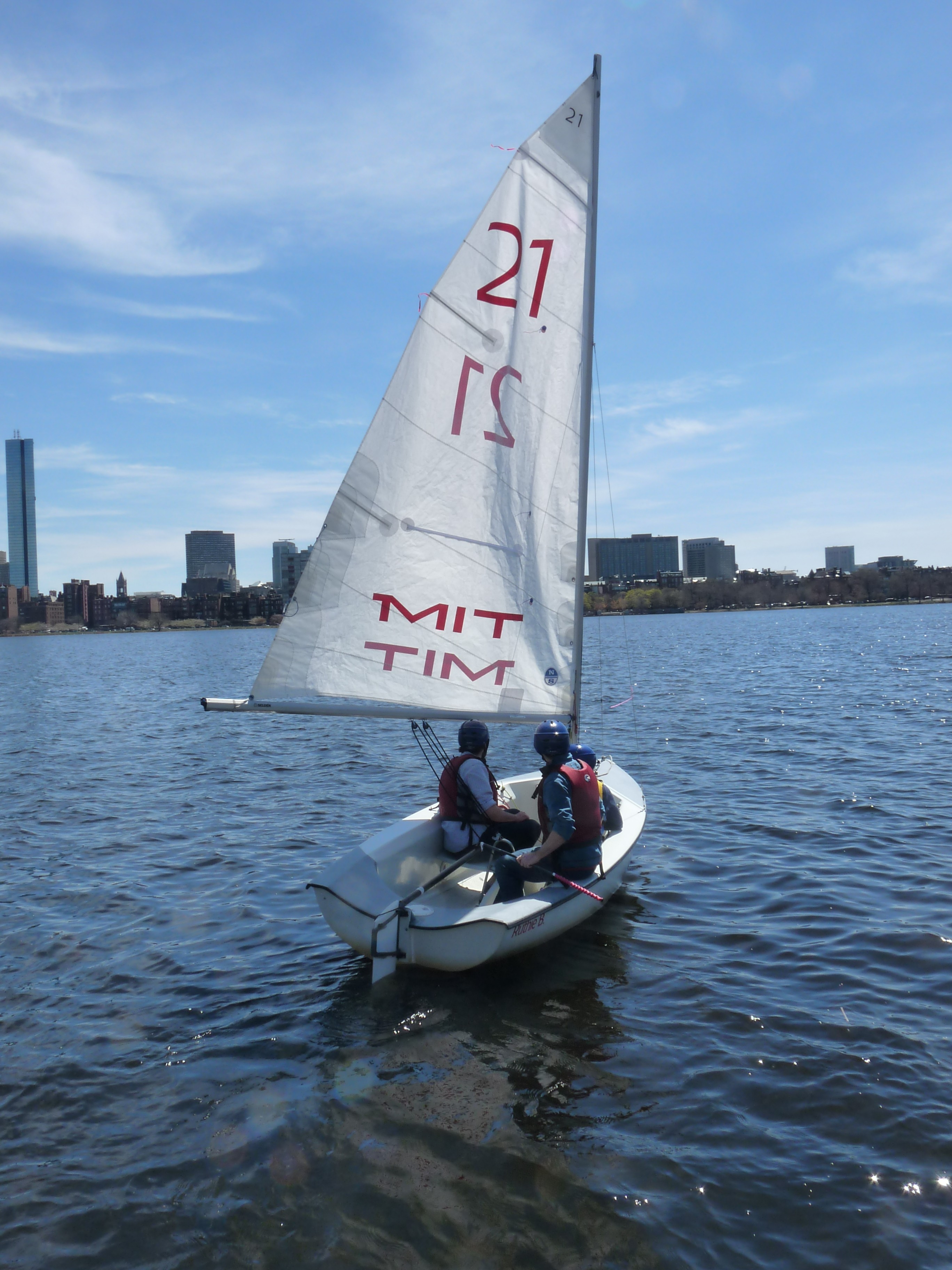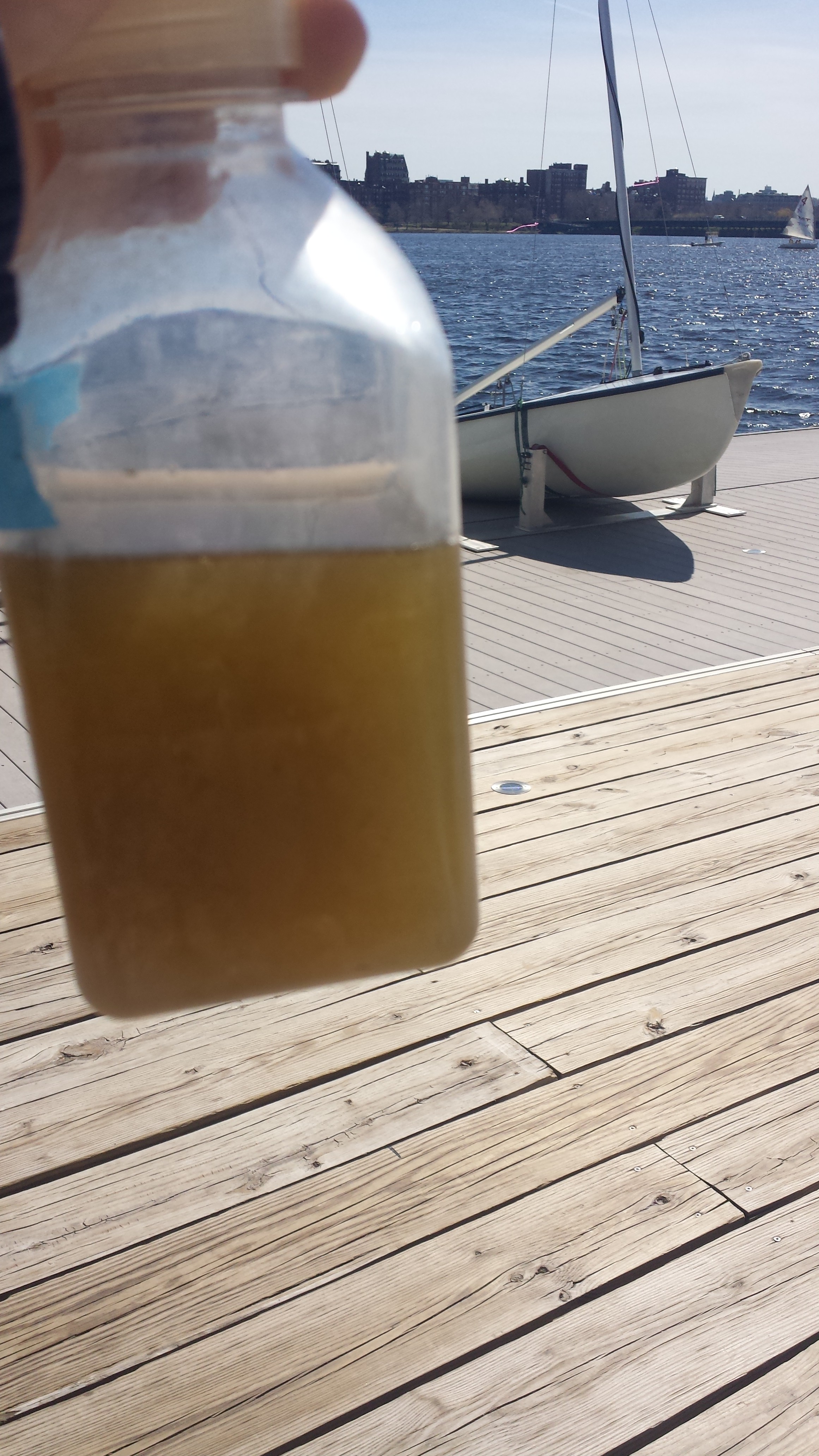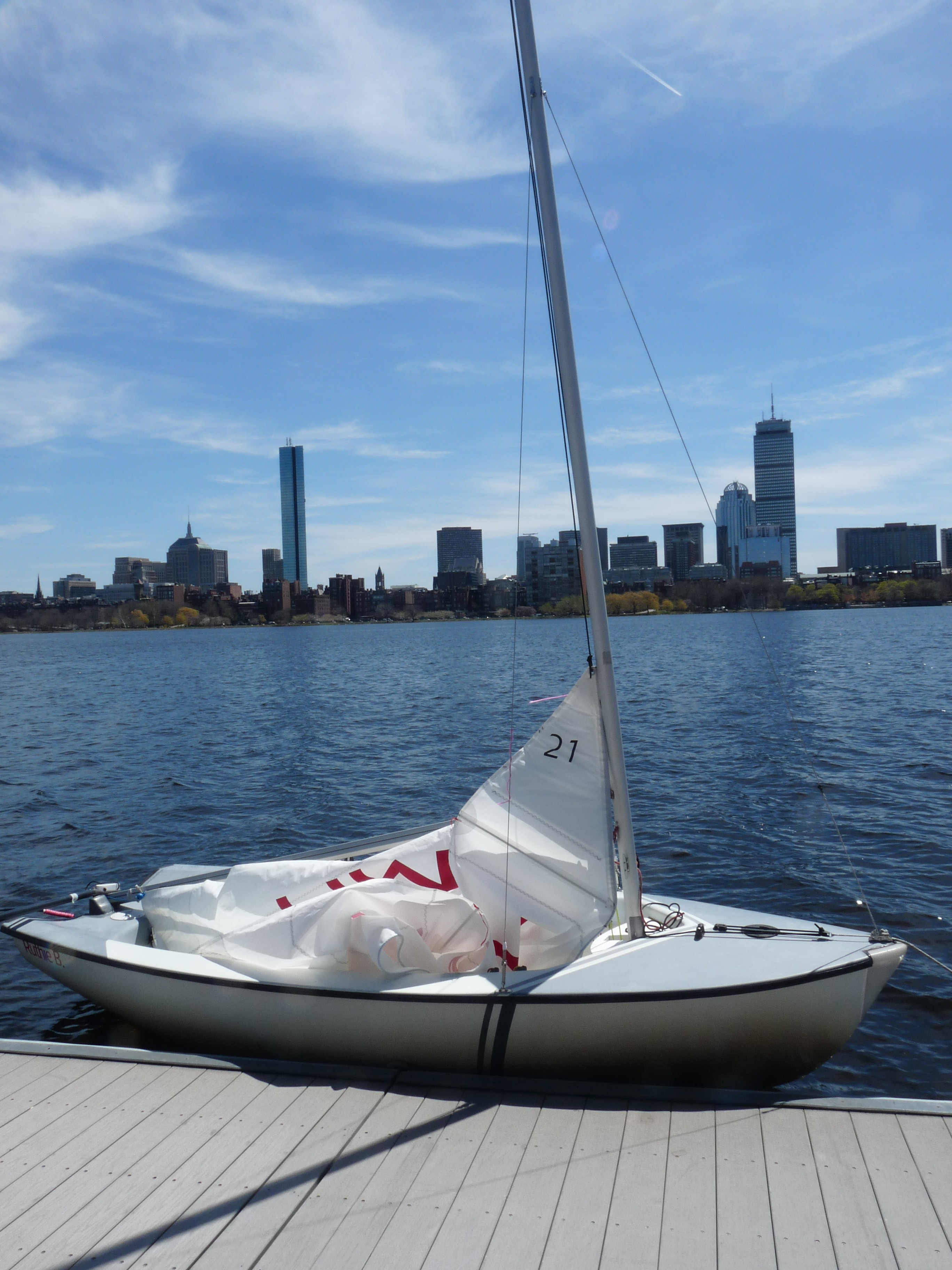Featured Stories, MIT, News | April 28, 2016
Oceans Alive!: Trawling in the Charles
By Lauren Hinkel
Ahead of the 2016 Cambridge Science Festival and MIT’s centennial celebration, postdocs from MIT’s Program in Oceans, Atmospheres, and Climate (PAOC) in the Department of Earth, Atmospheric and Planetary Sciences (EAPS) chartered a sailboat to collect plankton from the Charles River. David Talmy and Jon Lauderdale would join fellow EAPS researchers at the MIT Museum for the Cambridge Science Festival’s Earth Day event “Diving into the Pale Blue Dot” and the following day at MIT’s Open House where they and others would present Oceans Alive!, a public exhibition exploring global oceans and their ecosystems. Here, the plankton would feature.
Talmy monitored the net while Lauderdale navigated.
Talmy tied the rope of the net to the rear of the vessel and released it into the river. The air-filled bottle at the bottom of the net collected samples as it skimmed across the water’s surface. The researchers hoped to gather an assortment of copepods, dinoflagellates, phytoplankton, algae and the aquatic matrix in which they live.
We traversed the river a couple times, and Talmy pulled in the net. He rinsed the organisms and marine debris caught on the mesh into the small bottle, removed it and emptied it into a larger collection bottle.
After three passes, the container was full and we headed to shore to prep for Earth Day and Open House exhibits.
***
Talmy works with Mick Follows’ group in PAOC to understand how marine microbes, like the freshly-caught phytoplankton, acclimate and adapt to different aquatic environments. Using models he can explore how certain biological traits arise in a population and what environmental factors may have caused it.
Lauderdale is a physical oceanographer and ocean biogeochemical modeler also working with Mick Follows. He looks at the mechanisms by which changes in ocean biochemistry or organism production can affect the climate and CO2 levels in the atmosphere, particularly around the Southern Ocean.

